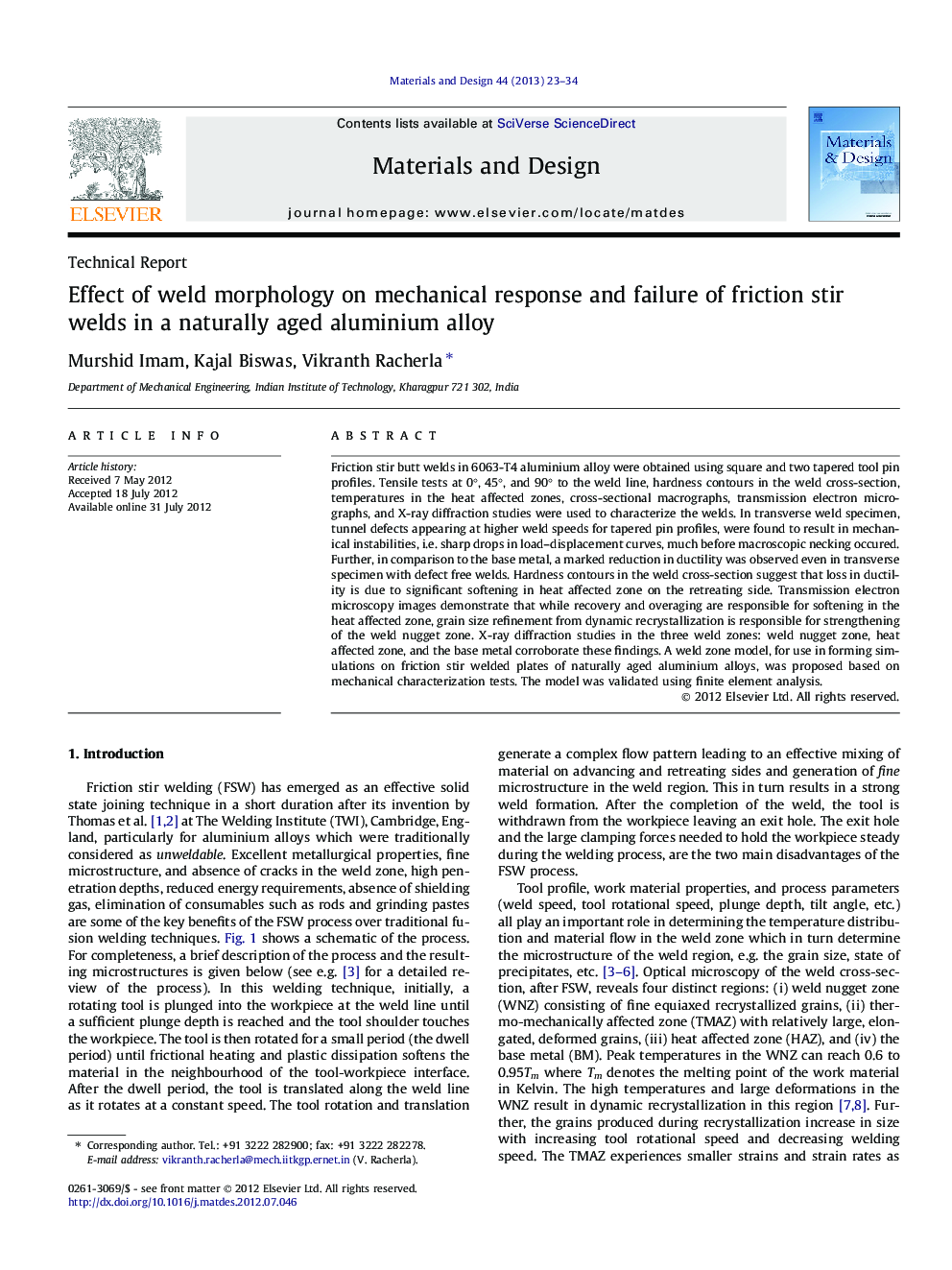| Article ID | Journal | Published Year | Pages | File Type |
|---|---|---|---|---|
| 830303 | Materials & Design (1980-2015) | 2013 | 12 Pages |
Friction stir butt welds in 6063-T4 aluminium alloy were obtained using square and two tapered tool pin profiles. Tensile tests at 0°, 45°, and 90° to the weld line, hardness contours in the weld cross-section, temperatures in the heat affected zones, cross-sectional macrographs, transmission electron micrographs, and X-ray diffraction studies were used to characterize the welds. In transverse weld specimen, tunnel defects appearing at higher weld speeds for tapered pin profiles, were found to result in mechanical instabilities, i.e. sharp drops in load–displacement curves, much before macroscopic necking occured. Further, in comparison to the base metal, a marked reduction in ductility was observed even in transverse specimen with defect free welds. Hardness contours in the weld cross-section suggest that loss in ductility is due to significant softening in heat affected zone on the retreating side. Transmission electron microscopy images demonstrate that while recovery and overaging are responsible for softening in the heat affected zone, grain size refinement from dynamic recrystallization is responsible for strengthening of the weld nugget zone. X-ray diffraction studies in the three weld zones: weld nugget zone, heat affected zone, and the base metal corroborate these findings. A weld zone model, for use in forming simulations on friction stir welded plates of naturally aged aluminium alloys, was proposed based on mechanical characterization tests. The model was validated using finite element analysis.
► Friction stir welds of AA 6063-T4 are obtained using three tool pin profiles. ► Signature of weld defects in mechanical response of welds is investigated. ► Correlation between peak temperatures in HAZs and their hardness is studied. ► Reasons for strengthening of WNZ and softening of HAZs are found using TEM and XRD. ► A FEM model for the weld zone is developed and validated.
